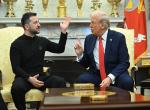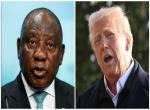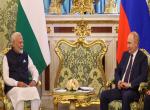The 8th BRICS Summit was held in Goa from 15-16 October 2016. The theme of the summit was “Building Responsive, Inclusive and Collective Solutions”. On 16 February 2016, India took over as the President of BRICS. This is second chance for India to host the BRICS Summit, the first was held in March 2012, under the theme “BRICS Partnership for Global Security and Prosperity”.
The term BRICS was coined by the economist Lord Jim O’ Neill. It is a conglomeration of five major emerging economies that are becoming key driver of globalisation. Their cooperation has been driven not only by economic and political factors, but also because of the failure of the existing global governance framework to satisfy the real needs of these countries. The BRICS countries encompass 30 percent of the world’s area and about 42 percent of the total population.
Over the years, BRICS has evolved as an organisation. At the third summit in 2011, South Africa was included as the fifth country.This year for the first time, as an outreach Summit of BRICS, leaders of the Bay of Bengal Initiative for Multi-Sectoral Technical and Economic Cooperation (BIMSTEC) comprising of Bangladesh, Bhutan, India, Myanmar, Nepal, Sri Lanka and Thailand were invited. The meeting was an opportunity to renew friendships with BIMSTEC as well as jointly explore possibilities of expanding trade and commercial ties and investment cooperation between BRICS and BIMSTEC countries.
Notably, the G-20 is the first global economic governance mechanism in which the BRICS countries have participated as the core members.During the BRICS foreign minister meeting on the sidelines of a series of UN conferences in New York on 20 September 2016, the Chinese Foreign Minister Wang Yi acknowledged that with the support of the BRICS nations, the G20 Hangzhou summit was a success and provided direction for the future development of the world economy.1 The BRICS countries have also participated in regular informal leaders meeting during the G20 summits. This year, besides the formal meeting, few informal events took place involving all the five countries. The first BRICS film festival was held at New Delhi, the first trade fair of the BRICS countries was held in New Delhi, first BRICS U-17 football cup was held in Goa.
Outcome of the Summit
The BRICS document was 109 points and 7000 words document.2 This was the most elaborate document released at any BRICS summit. The document covered overall concerns of all five BRICS countries. The agenda of BRICS Summit has expanded after 2013 when Russia emphasized the need that the BRICS should focus in political and security cooperation also.3
One of the concrete outcome of BRICS has been the establishment of the New Development Bank (NBD). The NBD has already completed one year of operation. In July, NDB raised 3 billion RMB by issuing its first bonds in the Chinese Market. In April, NDB approved its first sets of loans worth USD 811 million supporting renewable energy projects in each of the five countries.4 In the document, the BRICS countries reaffirmed commitment to the Financial Action Task Force (FATF) international standards on combating money laundering and the Financing of Terrorism and Proliferation.
The document reiterated the spirit of the United Nations and respect for international law. It mentioned about the need for a comprehensive reform of the UN, including its security council to make it more representative and increase the representation of the developing countries.It stood by the implementation of the 2030 Agenda for sustainable development in line with national circumstances and development context respecting the national policy space.The BRICS countries reviewed all the global issues. It raised concern about the situation in Middle East and North Africa and Syria. It stood for implementing the two-state solution of the Palestinian-Israeli conflict on the basis of the relevant UNSC resolution. It also highlighted security challenges and the increasing terrorist activities in Afghanistan.
Other issues, like the freedom to use the outer space according to the international law, strengthening joint efforts to enhance security in the use of Information and Communication Technologies (ICTs), combating the use of ICTs for criminal and terrorist purposes and improving cooperation between technical law enforcement Research and Development and innovation in the field of ICTs and capacity building institutions were discussed.
China being the largest economy amongst the BRICS nation did not miss the opportunity to push for a free trade area for the BRICS grouping which witnessed low intra BRIC trade at below USD 300 billion. Further, President Xi Jinping tried to explain his “Belt and Road” initiative.He suggested that it is time for BRICS leaders to make some concrete initiatives for its further growth. He made a five point proposal for the BRICS nations to join hands in tough times, including building an open world, mapping out a shared developed vision, coping with the most pressing global challenges, safeguarding fairness and justice in the international community and deepening partnership within the bloc.5
Sideline Meetings during the Summit
This year’s summit was comes at a time when the three major member-Russia, India and China have their own political and strategic priorities to pursue. There were sideline meetings between President Putin and PM Modi and President Xi Jinping and PM Modi. India and Russia signed a multi–billion dollar energy and defence pacts on the side line of the summit.A total of 16 agreements, mostly in the fields of defence, energy, power, shipbuilding and space were signed. Both PM Modi and President Putin also lay the foundation of units 3 and 4 of the Kudankulam nuclear plant via video conferencing.6 Both the leaders got an opportunity to discuss how to recalibrate the bilateral relations in the changing world.
PM Modi and President Xi Jinping met for the 9th time on the sidelines of the BRICS.The talks centered on the issues of “Terrorism” and “India’s entry to NSG”.In September, there were talks between the Indian and Chinese negotiators without any breakthrough. There was no major shift in China’s opposition.During the present talks, it wasdecided that Amandeep Singh Gill, Joint Secretary (disarmament) and Wang Qun will meet “soon” for the second time. Seemingly, there was no major shift but the overall situation appeared to be “hopeful”. After the last meeting, the Chinese embassy had issued a statement recommending a two–step process at the NSG, to first discuss the criteria for non –signatories to the Nuclear Non –Proliferation Treaty like India and Pakistan, before discussing their membership.These assurance and second meeting are particularlyimportant for India as it looking forward to the special meeting of the NSG members to be held in November.7
On the issue of terrorism, PM Modi clearly mentioned that India and China “cannot afford” to have difference on terrorism. This was most affirmative stance taken by PM Modi on the issue of terrorism with China. He strongly, raised the issue of Masood Azhar and asked to designate him as terrorist at the U.N.Earlier, China had announced extension of its “technical hold” on India’s bid to get Masood Azhar designated as a terrorist by the UN on 1 October 2016, days before it was to run out. Technically, the hold can continue for up to three more months. The Chinese Foreign Ministry replied to the entire development by saying there were “still different views on India’s listing application”. Now, it is for China to decide by 31 December 2016 whether to release the hold and allow Azhar to be brought under sanctions, or to convert the hold into a veto of India’s submission holding him responsible for several attacks including the Pathankot airbase attack. Notably, the main outcome of these talks is that the special envoys of both countries State Councillor Yang Yechi and NSA AjitDoval will meet soon.8
Conclusion
Major achievement of this year’s summit is the strengthening of the BRICS. Keeping aside all the bilateral and internal differences all the five countries worked for the smooth functioning of the financial and regulatory sectors. There was reinforcement of links between BRICS and G20.New linkages (BRICS-BIMTEC) were established.This linkage is important at the time when South Asian Association for Regional Cooperation (SAARC) is at its decline.
However, there is still scope for more cooperation among nations. For the first time, the summit has touched upon the issue of “Terrorism” in depth and it also brought to the limelight the unwavering support of China to Pakistan. Clearly, despite, all attempts China did not condemn Pakistan for its terrorist activities all he mentioned about terrorism was, it is a part of the “global challenges” which have led to a complex and volatile external environment for BRICS countries”. Though, the Indian PM raised the issue of terrorism but there was no mention about terrorism within India. Undoubtedly, terrorism is an issue of global concern but the agenda of the summit could have been much broaden. It should have taken wider discussion on world problems, particularly those impacting all BRICS member.
The organisation that should have been essentially, dealing with economic issue has not delivered much in this sphere. The GDP of three out of five countries Brazil, Russia and South Africa have gone down. Even China is going through economic restructuring and there economy is going through the “New Normal” phase. All the five member countries strongly support multilateral world but each one of them have a different interpretation of multilateralism. The geopolitical glue between the countries seems to be becoming weak. Thus overall, the summit was high on symbolism.The next BRICS summits will be held in the southeastern Chinese city of Xiamen in September 2017.
Endnotes
- http://news.xinhuanet.com/english/2016-10/16/c_135758050.htm
- http://www.mea.gov.in/bilateral-documents.htm?dtl/27491/Goa+Declaration+at+8th+BRICS+Summit
- http:// news.xinhuanet.com/English/china/2013-03/28/c_124512026.htm.
- http://economictimes.indiatimes.com/markets/bonds/brics-nations-led-new-development-bank-to-raise-up-to-3billion-in-next-3-years/articleshow/54437039.cms
- http://en.people.cn/n3/2016/1017/c90000-9128062.html
- http://mea.gov.in/bilateraldocuments.htm?dtl/27481/List_of_agreementsMOUs_exchanged_during_IndiaRussia_Annual_Summit_October_15_2016
- http://www.thehindu.com/news/national/narendra-modixi-jinping-meeting-at-goa-brics-summit/article9224709.ece
- Ibid
Published Date: 8th November 2016, Image Source: https://en.wikipedia.org









Post new comment